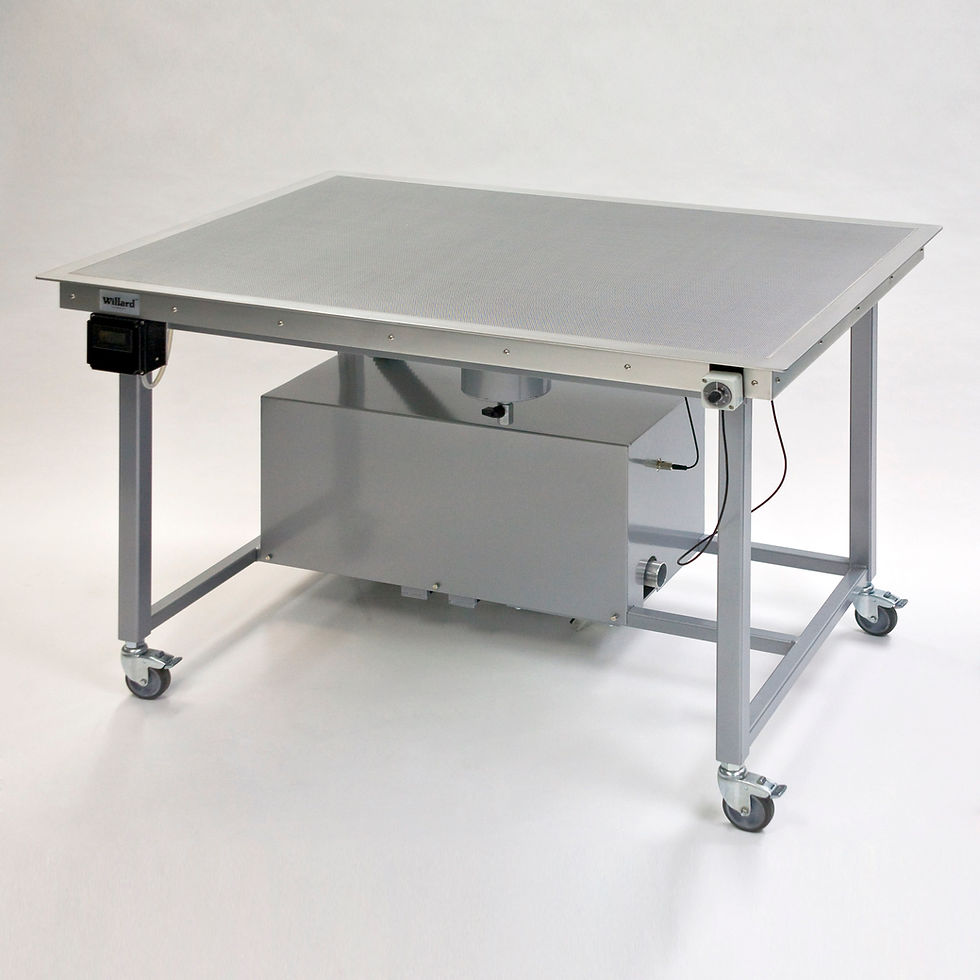The Conservator’s Toolkit: A Comprehensive Guide to Essential Conservation Tools
- Willard
- Jun 10
- 2 min read
In the meticulous world of art and heritage conservation, the tools you use are just as important as the techniques you master. Whether restoring a centuries-old canvas, stabilising delicate paper fibres, or treating historic textiles, the right equipment ensures precision, safety, and long-term preservation.
At Willard Conservation, we’ve spent decades supporting conservators worldwide with custom-built tools that help make their vital work possible. This guide explores some of the most essential conservation tools and the important roles they play across disciplines.
1. Laboratory Sinks: The heart of the conservation studio
A well-designed laboratory sink is fundamental in any conservation workspace. Used for everything from cleaning fragile surfaces to chemical rinsing, these sinks must be robust, chemical-resistant, and ergonomically designed to support careful handling of vulnerable materials.

At Willard, our laboratory sinks are crafted to meet the specific needs of conservators with adjustable height options, custom drainage, and splash-proof designs to maintain a safe and efficient working environment. Proper water-based treatments require controlled environments. A quality lab sink supports hygiene, material safety, and workflow.
2. Suction Tables: Control, precision, and safety
A staple in paper and textile conservation, the suction table offers controlled suction across a flat surface, enabling the conservator to apply moisture or solvents safely and evenly. These tables are indispensable for tasks including:
Removing stains and tidelines
Humidifying without full immersion
Consolidating flaking pigments

Willard Suction Tables are known for their durability, consistency, and quiet operation — with optional built-in heating for added flexibility. Suction tables enable localised treatment, crucial for delicate materials that can’t withstand saturation.
3. Heated Spatulas: For delicate lifting and flattening
Used in paper, painting, and textile conservation, heated spatulas apply gentle, controlled heat to aid in the safe removal or reattachment of materials such as:
Lifting tape residues
Flattening creases
Re-adhering lifting paint layers

Willard’s precision temperature-controlled heated spatulas are a firm favourite among leading institutions, offering a range of interchangeable tips and responsive heat settings. Heat can be risky without control. A reliable heated spatula allows for safe, subtle interventions where adhesives and materials must be softened or manipulated.
Other Tools Worth Mentioning
While the above tools form the core of many studios, modern conservators may also rely on:
Humidity domes for safe relaxation of curled paper or canvas
UV light sources for analysis and inspection
Each piece plays a role in the broader mission: to protect and preserve cultural heritage with as little intrusion as possible.
Built for Conservation – Trusted by Experts
Willard Conservation has proudly supplied tools to institutions and conservation studios worldwide. Every product is designed with feedback from real-world conservators, ensuring our tools enhance — rather than hinder — your delicate and demanding work.
Whether you’re outfitting a new studio or looking to upgrade essential equipment, our team is here to advise and support.
Explore the Willard range: www.willard.co.uk
Contact us for a bespoke consultation: enquiries@willard.co.uk




Comments